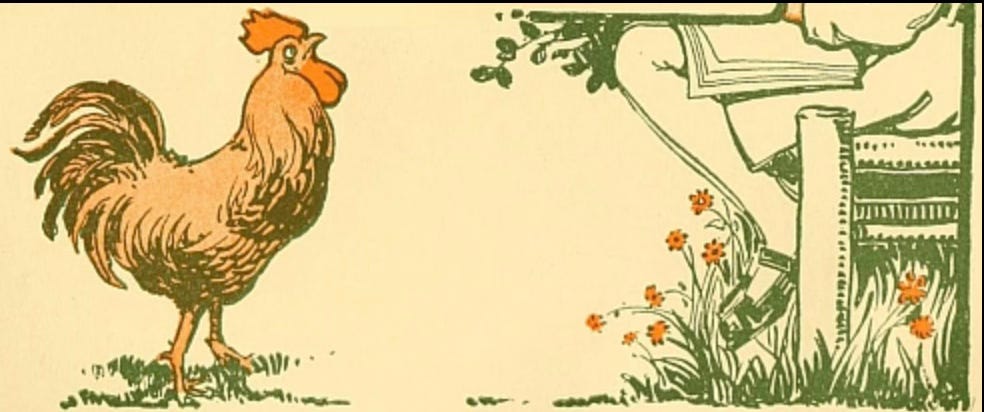When I found out about an old sewing book written for children in the early 1900s, I immediately thought it might be just the book for one of my sisters to buy and share with her granddaughters. We texted back and forth about it, but I don’t think she bought one because she wasn’t sure if a used book from that time period would still have the sewing patterns that were supposedly in it.
But I kept searching and discovered that the author of that sewing book, Jane Eayre Fryer, had also written a gardening book for children, which in my mind qualified her to be a lost lady of garden writing.
Her Biography
I found most of the basic information about Jane through some internet searches.
She was born in Philadelphia, PA in 1876 to Isabella Van de Veer and Mortimer Haines Eayre. According to the 1900 census, she had a sister, Edith, who was two years younger and her mother was a widow by that time.
According to Michigan State University Libraries Digital Collection:
After graduating from Northfield Seminary, Massachusetts in 1896, where she specialized in domestic art and science, she taught Latin and English at the Mt. Holly Military Academy in New Jersey (1897-98) and supervised the domestic art and science program at the Jacob Tome Institute in Port Deposit, Maryland (1899 - 1902). In January of 1902 she married John Gayton Fryer of Providence, Rhode Island.
She had one adopted daughter, Stella or Frances Stella, who was born in early 1906.
Jane died January 22, 1954.
Her Books
I think Jane wrote or co-wrote about 33 books—it all depends on which lists you trust—but she is mostly known as the author of the Mary Frances books. Per information on Goodreads:
“As a 36 year old school teacher from Merchantville, New Jersey, Jane Eayre Fryer wrote the first Mary Frances book---and left a lasting legacy. Combining fact and fancy for a complete course in home economics, her innovative concept was to teach useful things in an entertaining way. The Mary Frances books were not mere storybooks to be read and cast aside; these were instruction books, in story form, designed to teach valuable life skills to youthful readers in a playful manner. In 7 volumes, Jane Eayre Fryer leads Mary Frances through great adventures---and as Mary Frances learns cooking, sewing, housekeeping, gardening, first aid, knitting and crocheting from her fairy helpers, the reader learns right along with her.”
The Mary Frances books all came out after 1911. There were seven of them.
The Mary Frances Sewing Book: Adventures Among the Thimble People
The Mary Frances Knitting and Crocheting Book
The Mary Frances Cook Book: Adventures Among the Kitchen People
The Mary Frances Housekeeper or Adventures Among the Doll People
The Mary Frances First Aid Book
The Mary Frances Story Book or Adventures Among the Story People
And, of course, the one we are most interested in:
The Mary Frances Garden Book or Adventures Among the Garden People
The Mary Frances Garden Book
Because all of these books are no longer protected by copyright, there are reprints available for most of them. I bought a 100th anniversary edition, which for reading is fine, but it’s in black and white. The original, which I found online, has green ink and touches of orange were used in the illustrations. I wish I had a copy like that!
All the Mary Frances books combine stories with factual information, plus instructions for projects suitable for children. Some of the chapters in the garden book include: Billy Tests the Soil; Seed Babies and Their Nurses; Mr. Cutworm, the Villian; and Mr Hop Toad Hops In. There are also chapters for each season that describe flowers that bloom in that season.
For the 100th anniversary edition, one of the last chapters in the book is about how to sew a gardening apron, which ties it into the sewing book.
Could children today learn from this book? They could. I think most of the information included is relevant and useful.
But if you decide to buy a reprint like I did, maybe look for one that preserves the interior colors!
Questions
I wonder where Jane got all the information to write this gardening book for children. The more I read it, the more impressed I am with how much gardening information she included. There’s even a chapter on grafting fruit trees.
Anyway, I think I was more excited about finding Jane’s gardening book, so I could add her to my list of Lost Ladies of Garden Writing, than my sister was about her sewing book.
Do you know of other women authors of gardening books that I should research as Lost Ladies of Garden Writing? Send them my way via a comment or email!
If you find these articles interesting and think others will too, please share them and/or subscribe.
I’ll return with the next Lost Lady of Garden Writing article in two weeks. In the meantime, you can find me in several places: my website and blog, The Gardenangelists podcast, and my weekly newsletter, In the Garden With Carol.
(Some book links may be affiliate links.)







